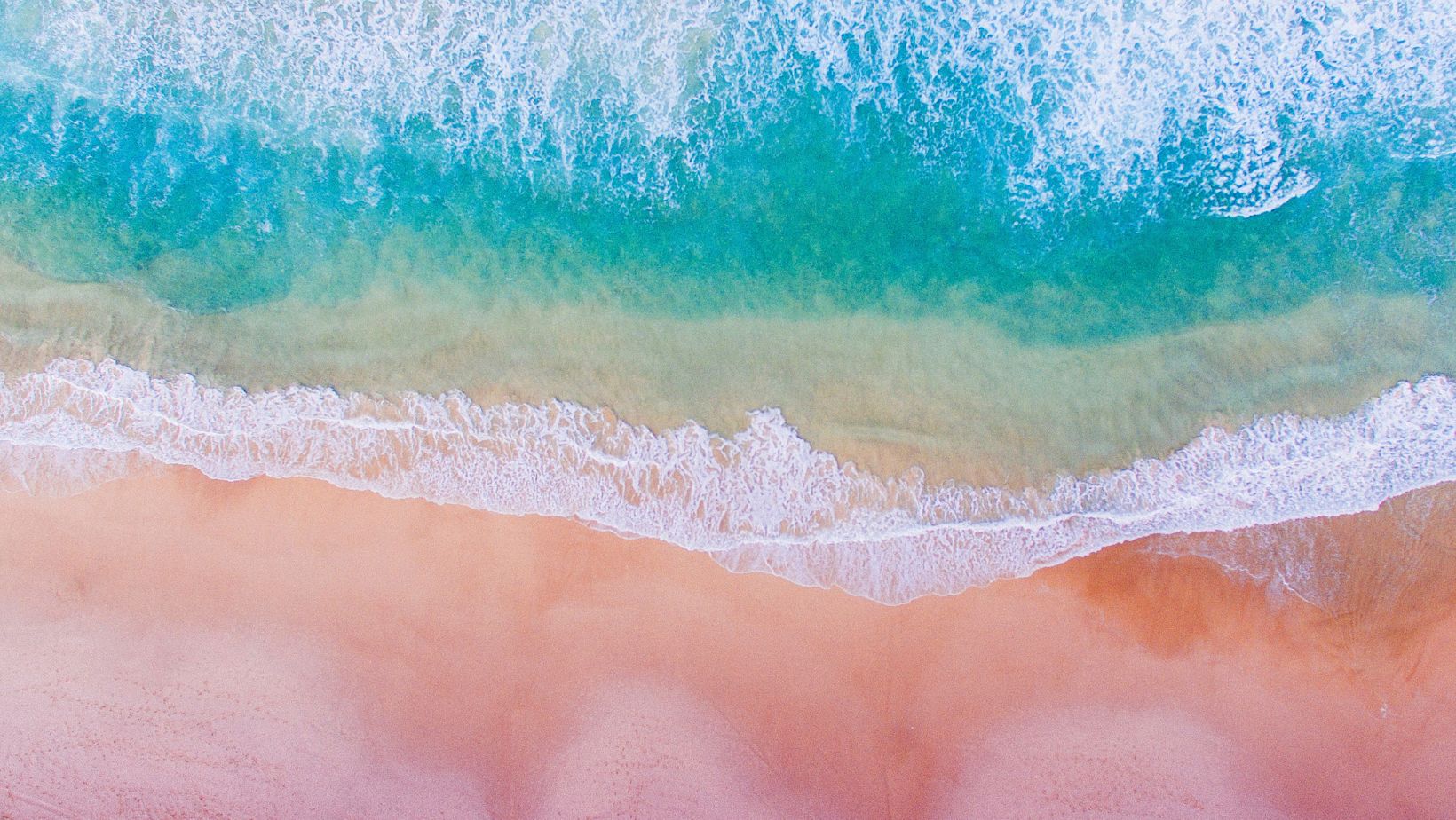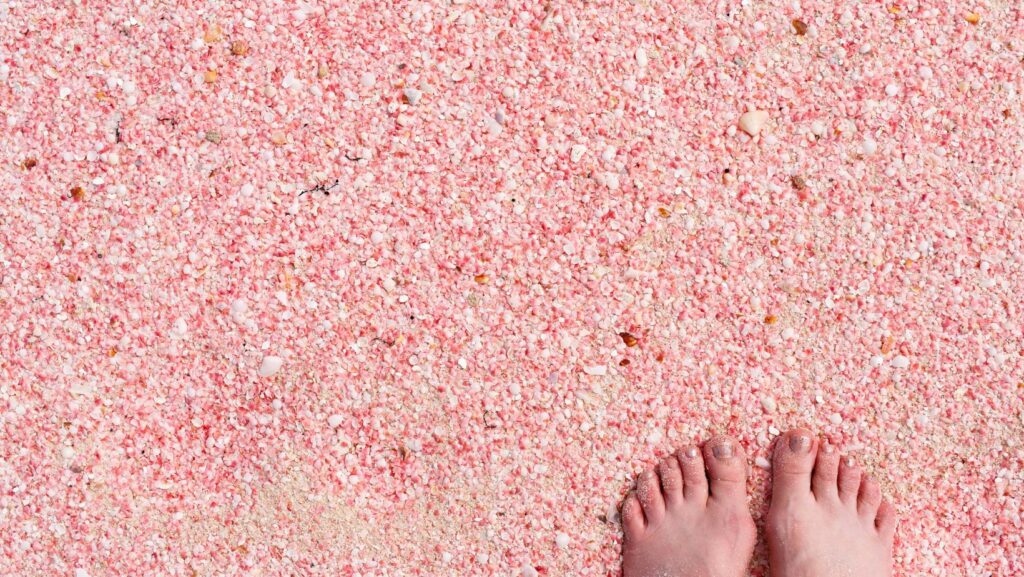
Have you ever seen a pink beach? If not, then you should definitely put the Bermuda Beach on your list of places to see. The sand is a beautiful pink color and it’s definitely a sight to behold. But what makes the sand at this beach so pink?
Uniqueness of the Bermuda Beach Pink Sand
Bermuda’s famous pink sand beaches get their striking color from Foraminifera, a type of phytoplankton with a reddish-pink shell. When the tiny marine organisms die, their calcium carbonate shells sink to the bottom of the ocean and accumulate over time. The remains of foraminifera are just one component of Bermuda’s pink sand; other contributing factors include bits of coral, eroded limestone, and washed-up red algae.

Why is the Bermuda Beach Sand Pink
The sand on Bermuda’s pink beaches is created by a type of coral known as Foraminifera. When this coral dies, its exoskeleton breaks down into pink sand particles. The pink color is then further enhanced by white shiny bits of coral and other minerals.
The Science Behind the Pink Sand
The bright pink color of Bermuda’s south shore beaches is created by the mixing of two elements: arthritis sand and red algae. The sand is a type of limestone known as pulverized fossilized coral reef and is found in abundance on Bermuda’s shores. The reef was once part of a living coral ecosystem, but over time, the coral has been broken down into small pieces by the waves and currents. The remains of very small creatures, called foraminifera, which had red shells, are also found in the sand. When the two elements are mixed together, they create the perfect environment for pink sand to form.
How the Pink Sand is Formed
The distinctive pink color of Bermuda’s beaches is the result of a mixture of coral, shells, and foraminifera. Foraminifera are single-celled organisms that have a hard shell, known as a test. These tests are composed of calcium carbonate, which is white. The coral and shells also have a white calcium carbonate base. The combination of these three elements creates the perfect environment for the growth of tiny algae, which are pink in color. Over time, the coral and shells break down into smaller pieces, and the pink algae attach themselves to these pieces. The wind and waves then carry these pink-colored particles to the shore, where they mix with the white sand to create Bermuda’s famous pink beaches.
The History of the Pink Sand
The Bermudas, an island group in the western Atlantic Ocean, are composed of about 150 small islands with pink-sand beaches. The islands are of coral origin, and the pink color of the sand is due to the presence of foraminifera, a type of marine algae.

The Bermudas were first settled by the Spanish in the early 16th century, but they were quickly abandoned due to hostilities with the native population. The islands were then settled by the English in 1609 and remained under British rule until they were relinquished to the United States in 1898. During World War II, the Bermudas served as an important military base for the Allies.
Today, the Bermudas are a popular tourist destination known for their picturesque beaches and lush vegetation. The pink sand of Bermuda’s beaches is one of its most distinctive features and has been featured in numerous travel magazines and brochures.
The Pink Sand Today
The sand on Bermuda beaches is pink because of Foraminifera, a type of algae with a reddish-brown pigment. The algae is eaten by tiny organisms called copepods, which defecate pink-colored sand. The process of Foraminifera eating copepods and excreting pink sand has been going on for millions of years.
Over time, the Foraminifera have deposited so much pink sand on Bermuda’s beaches that the island is now world-famous for its pretty pink beaches. In fact, tourism is one of Bermuda’s main industries, and many visitors come to the island specifically to see the pink sand.
If you’re planning a trip to see the Bermuda pink sand for yourself, there are a few things you should know. First of all, not all of Bermuda’s beaches are pink – only about 10% of them are. And even on the pinkest beaches, you won’t necessarily find pure pink sand; there will usually be a mix of white and light brown sand as well.
The best time to see the pink sand is early in the morning or late in the afternoon, when the sun is low in the sky and casts an orangey-pink glow over the beach. If you want to take home some of this pretty sand as a souvenir, be sure to buy it from a reputable source; there are many fake “Bermuda Pink Sand” products on the market that are actually just dyed white sand.
How to Get to the Pink Sand
The beautiful pink sand of Bermuda’s beaches is one of the island’s most distinctive features. The pink color is created by a combination of white sand and coral reef, which is ground into a fine powder by the waves. The pink sand is also unique because it is made up of very small pieces of coral, which reflect light differently than other types of sand. The best way to see the pink sand is to take a walk along one of Bermuda’s many beaches.
What to do at the Pink Sand
The beauty of Bermuda’s pink sand beaches has to be seen to be believed. The sand is actually composed of a variety of coral, limestone, and shells that have been ground up over time and mixed together. The pink color comes from Foraminifera, a type of marine algae that produces a red pigment. When the algae dies, it falls to the bottom of the ocean and is eventually deposited on the beach.

